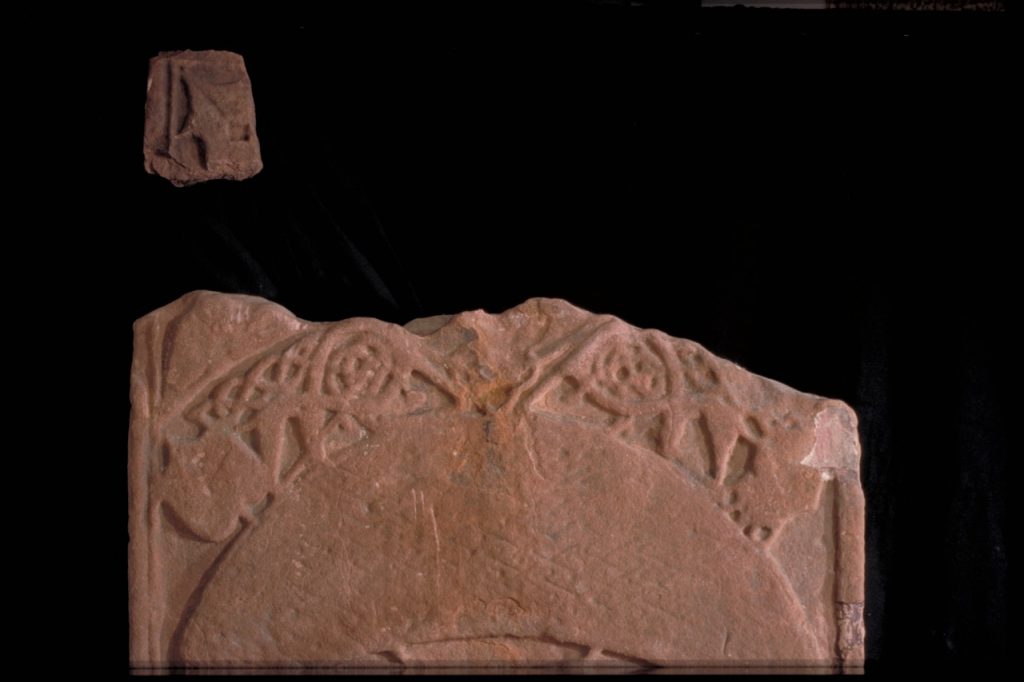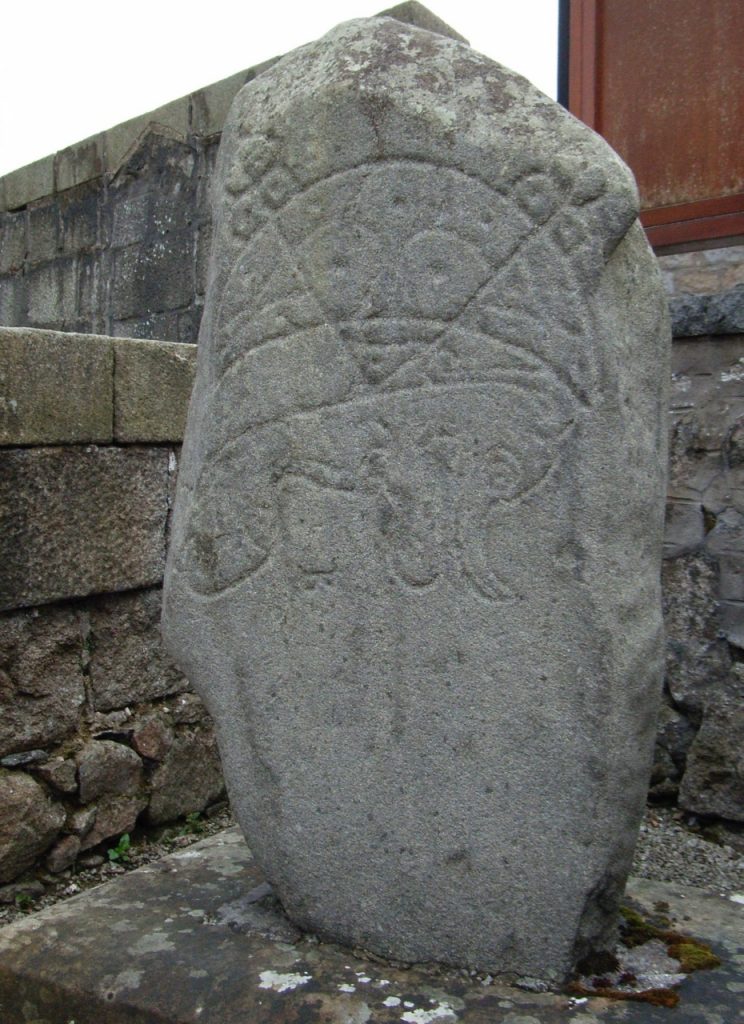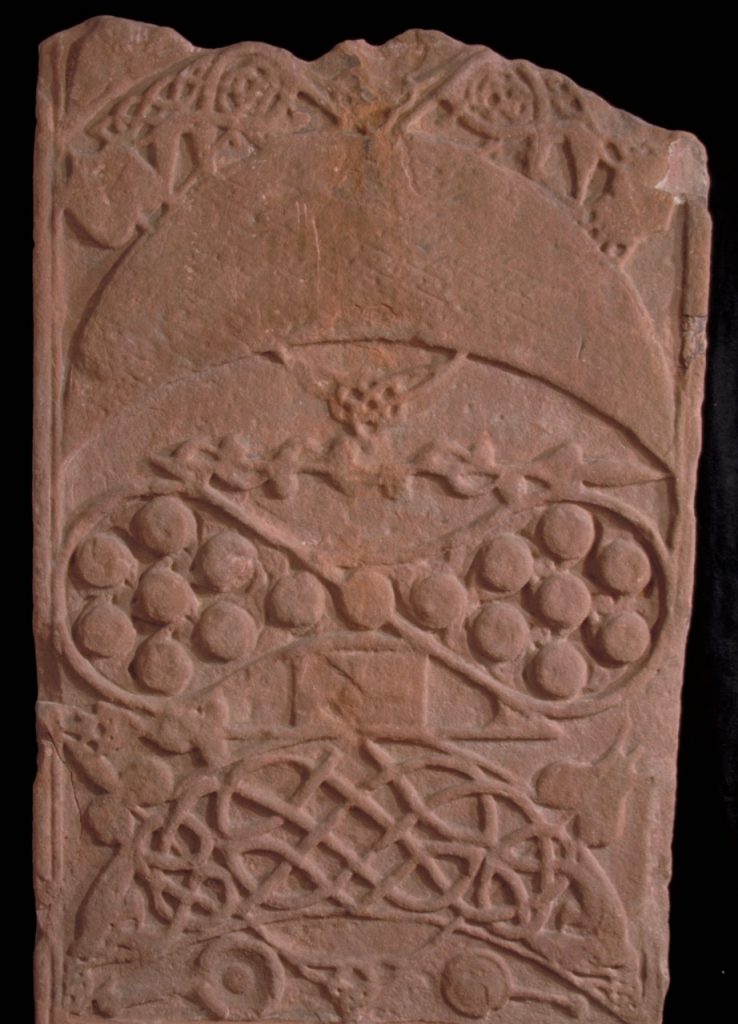Rosemarkie resident Hugh Fearn found this about 25 years ago. He was building terraces in his garden behind the High Street when he spotted it. Brushing away the earth he saw the carved design and knew exactly what he was looking at – a piece from a Pictish sculpted stone. It looks like the end of an arrow – just like those of the V-rods that form the crescent and V-rod Pictish symbols.
But when Hugh took it into Groam House he was even more pleased. Hugh and Susan Seright, the museum’s curator, could see that it was probably a missing fragment from the top of the fine cross-slab that is the focus of the Groam House displays.

This is the only fragment that has been found from the cross-slab in recent times. But over the years Hugh and others have found other Pictish and medieval sculpted pieces, either in gardens or in walls. Nobody should be surprised about such discoveries. After the Reformation of the 1560s AD, highly decorated Pictish Christian stones were no longer valued. In many instances slabs and stones were broken up for re-use in floors or walls. So we do expect more pieces to be found on both sides of the old High Street, between Hawkhill Road and the Rosemarkie Burn or beyond.





